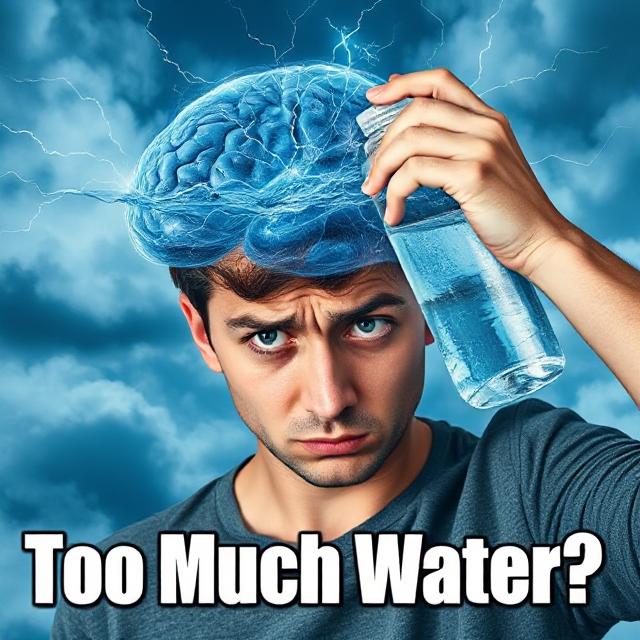Table of Contents
Real Hydration vs Fluid Myths: What Science Reveals
When people feel fatigued, dizzy, or foggy, they often assume the fix is simple: drink more water. But true hydration goes far beyond fluid volume. In fact, drinking too much plain water without proper electrolyte balance can lead to the very symptoms you’re trying to avoid.
This page debunks common hydration myths and reveals what real hydration means—at the cellular level.
What Is Real Hydration?
Hydration isn’t just about water. It’s about water plus electrolytes. For your cells to absorb and use water effectively, they need an appropriate ratio of sodium, potassium, magnesium, and chloride to create osmotic balance.
Think of it like this:
- Water = the vehicle
- Electrolytes = the key that opens the cellular gate
Without minerals, water can’t enter cells efficiently. That’s why you can drink all day and still feel tired, bloated, or lightheaded—because you’re flushing out your electrolytes, not hydrating.
Top Fluid Myths That Drain Your Energy
Myth 1: More Water = More Hydration
Reality: Overhydration can dilute sodium levels in your blood, leading to hyponatremia—a condition that causes nausea, confusion, and even seizures in extreme cases.
If you’re drinking more than 3–4 liters per day without adding electrolytes, you’re risking imbalance, not gaining hydration.
Myth 2: Urine Should Always Be Clear
Reality: Slightly yellow urine often indicates healthy hydration. Constantly clear urine may mean you’re over-flushing your system.
Your goal should be pale straw color, not crystal clear.
Myth 3: Sports Drinks Are the Answer
Reality: Most commercial electrolyte drinks are loaded with sugar, artificial colors, and inadequate mineral ratios. They often provide too much glucose and too little actual electrolyte content.
What you need is sodium, potassium, and magnesium—not neon liquid.
Myth 4: Coffee and Tea Dehydrate You
Reality: While caffeine has a mild diuretic effect, moderate consumption doesn’t lead to net dehydration. In fact, black coffee or green tea can count toward your daily fluid intake.
The real dehydration risk is replacing meals or water entirely with caffeine.
⚡ Symptoms of Poor Hydration Despite Drinking Water
- Chronic fatigue
- Headaches
- Brain fog
- Muscle cramps
- Low mood or anxiety
- Dizziness upon standing
- Constant thirst that never feels quenched
These are not just signs of fluid loss—they’re signs of mineral depletion.
Real Hydration = Water + Electrolytes + Rhythm
Step 1: Start the Day Right
Morning is when cortisol spikes, your body is in repair mode, and you’re most mineral-depleted. Begin your day with:
16 oz warm water + ½ tsp sea salt + lemon juice
(Add trace minerals or potassium drops for bonus effect)
Step 2: Hydrate Strategically
Don’t sip all day mindlessly. Drink around meals and activity windows—when the body’s ready to absorb and needs support.
- Before workouts: small mineral-rich drink
- After sweating: coconut water + pinch of salt
- With meals: moderate fluids only (too much dilutes digestion)
Step 3: Track Your Symptoms, Not Just Intake
Use how you feel as your hydration compass:
| Symptom | Possible Fix |
|---|---|
| Headache | Add salt + magnesium |
| Muscle cramps | Boost potassium and magnesium |
| Fatigue | Combine sodium with water upon waking |
| Dizziness | Balance fluids with electrolyte powder |
BrainWaveBoost Insight
Your brain floats in cerebrospinal fluid—electrolyte-rich water that cushions and energizes your entire nervous system. When hydration falters, cognitive sharpness declines. Think of electrolytes as the battery acid for your neural circuits.
When you fix hydration at this level, you don’t just quench thirst—you turn the lights back on.
DIY Electrolyte Drink (No Sugar Bombs)
- 16 oz filtered water
- ½ tsp sea salt or Redmond Real Salt
- ¼ tsp potassium chloride (or cream of tartar)
- 200 mg magnesium glycinate (optional capsule)
- Juice of half a lemon
- Stevia or monk fruit if desired
Cost: ~$0.40
Conclusion
Real hydration isn’t just about water. It’s about the balance of water and electrolytes that powers every cell in your body. By shedding the myths and understanding the mineral foundation of hydration, you can restore clarity, energy, and vitality—without overloading your bladder or bloodstream.
References
- Journal of Clinical Nutrition: “Hydration Strategies for Athletes”
- NIH: Electrolyte Imbalance
- WHO: Oral Rehydration Salts Formula Guidelines




